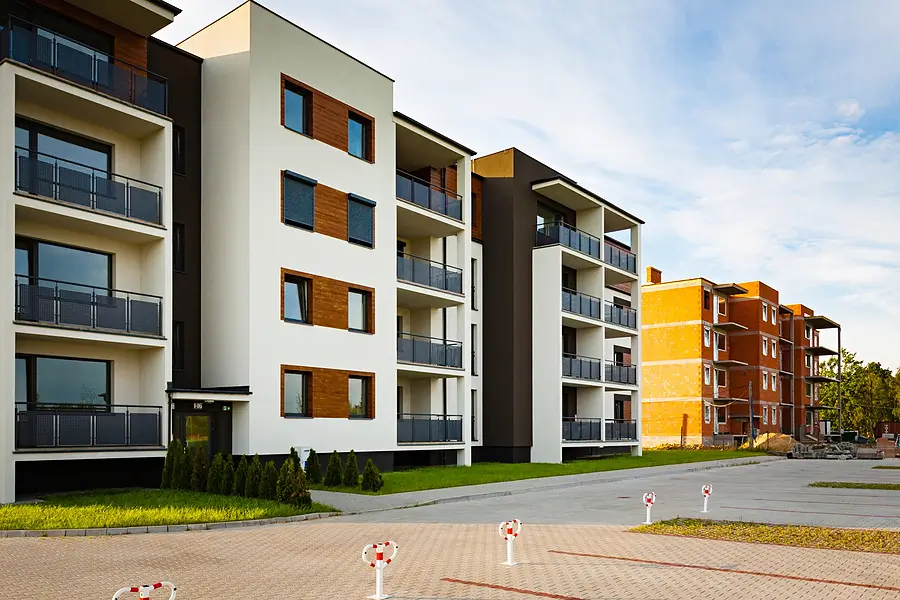When building a real estate investment portfolio, the choice between multifamily versus single-family homes can significantly impact your strategy. As real estate investors, understanding the differences between these two options is crucial for maximizing rental income and ensuring consistent cash flow. Whether you’re leaning toward single-family properties or multifamily units, each option offers unique benefits and challenges.
Now, let's look at the pros and cons of single family compared to multi-family properties and decide which one would be a better choice for your real estate investment journey.
What Is a Single-Family Home?
A single-family home is a residential property designed for one family. Unlike multifamily properties, single-family homes typically have no shared walls or common spaces. These homes are perfect for real estate investors looking to start small, as they are considered residential real estate and usually come with simpler mortgage payments. Many real estate investors opt for single-family rental properties because they tend to appreciate steadily over time, making them a solid long-term investment.
Single-family homes tend to produce only one rental income stream. While it's easier to manage a single-family rental property, your cash flow relies solely on one tenant. If that tenant moves out, your rental income stops flowing temporarily. This is something to keep in mind as a property investor.
What Is a Multifamily Property?
A multifamily property, on the other hand, contains multiple units within a single structure. Multifamily homes can range from duplexes to large apartment buildings with five or more units. Real estate investors who choose multifamily properties often enjoy multiple income streams, as each unit can generate passive income. This makes multifamily investments ideal for those seeking to diversify their real estate portfolio and ensure consistent cash flow.
Multifamily buildings allow real estate investors to spread risk across several tenants. Even if one unit becomes vacant, the other rental units will continue generating income, which is why many experienced investors prefer this type of investment. However, managing multiple units can become time-consuming, especially as the number of units grows. To learn more about how to navigate multifamily investments and make the most of this opportunity, check out our comprehensive guide on how to invest in multifamily real estate.
Managing multifamily properties can become time-consuming, especially as the number of units grows. This is where we come in. At Axela Management, we specialize in handling all aspects of property management—from tenant screening to rent collection—so you can focus on growing your real estate investments without the stress of day-to-day operations.
Key Differences: Single-Family vs. Multifamily Properties
When comparing single-family homes versus multifamily properties, several factors come into play. As you consider which option best aligns with your investment portfolio, it's essential to weigh these differences:
1. Rental Income and Cash Flow
Single-family homes derive rental income from one tenant alone. That means your income from the investment is dependent on the occupancy of that single unit. Compare this to a multifamily property that rents out to multiple units and remains stable even when one or more unit becomes vacant.
2. Property Management
Managing a single-family home is generally simpler because it involves fewer tenants and less maintenance. Real estate investors who prefer a hands-on approach may favor single-family rental properties for this reason. However, multifamily homes, with their multiple rental units, often require the expertise of a property manager or property management company. This is especially true for apartment buildings or multi-unit properties with five or more units.
3. Financing and Down Payments
Obtaining financing for a single-family home is typically easier, and mortgage payments are often lower than those for multifamily real estate. Single-family investments usually qualify for conventional loans, and the down payment requirements are less stringent. However, multifamily buildings—especially those with more than four units—are often considered commercial real estate, requiring commercial loans and larger down payments. Commercial properties typically demand a more rigorous approval process for real estate investors.
Pros and Cons of Single-Family Homes
Pros:
Lower cost of entry: Single-family homes often have lower down payments, making them more accessible for beginner investors.
Simpler management: With only one tenant and one unit to manage, property management tasks are more straightforward.
Long-term appreciation: Single-family homes tend to appreciate over time, adding value to your real estate portfolio.
Cons:
Limited rental income: Since single-family homes only provide income from one tenant, you’re more vulnerable to cash flow disruptions when vacancies occur.
Higher vacancy risk: If your tenant moves out, the property sits vacant, and rental income halts until you find a new tenant.
Pros and Cons of Multifamily Properties
Pros:
Multiple income streams: Multifamily properties allow you to collect rent from several units, which stabilizes your cash flow.
Lower vacancy risk: Even if one unit is vacant, you’ll continue to earn rental income from other units.
Economies of scale: Maintenance and repair costs are often spread across multiple tenants, making operations more cost-efficient.
Cons:
Higher upfront costs: Multifamily investment properties typically require larger down payments and more complex financing.
Increased property management needs: Managing multiple tenants can be time-consuming, prompting many investors to work with a property management company.
Which Investment Is Right for You?
Choosing between single-family home vs. multifamily homes depends on your investment goals, experience, and resources. If you prefer simplicity and lower upfront costs, single-family rentals may be a good fit for you. However, if you’re looking for consistent cash flow and multiple income streams, a multifamily investment property might be the better choice.
Work with Axela Management
Axela Management is always here to assist you with multifamily property investing. We specialize in managing large-scale multifamily housing, and we can help real estate investors earn more returns. Contact us today to learn more about how we can help you, whether in property management or growing your real estate investments!


